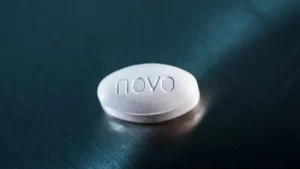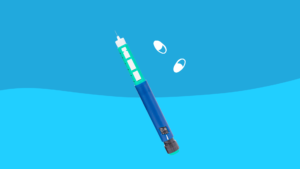Lantus Vs Ozempic : Semaglutide Injection 0.5 Mg Vs 2 Mg
HOME | DIABETES EDUCATION | LANTUS VS OZEMPIC: SEMAGLUTIDE INJECTION 0.5 MG VS 2 MG
Diabetes management comparison between Lantus and Ozempic focuses on side effects, costs, and dosages like Semaglutide Injection 0.5 mg vs. 2 mg. Understanding these medications is crucial for tailored patient treatment plans.
Key Takeaways; Lantus vs Ozempic
- Lantus and Ozempic differ in speed of action, target diabetes types, side effects, and cost.
- Ozempic is faster-acting, recommended for Type 2 Diabetes, has common side effects like nausea.
- Lantus is slower, suitable for Type 1 and Type 2 Diabetes, may cause weight gain and hypoglycemia.
- Ozempic is costlier but aids in weight reduction, while Lantus is moderately expensive and helps reduce diabetes-related complications.
Mechanism of Action Comparison of Lantus and Ozempic
Lantus mimics natural insulin to regulate blood sugar levels consistently over 24 hours. Ozempic activates GLP-1 receptors to enhance insulin production, reduce glucagon secretion, delay gastric emptying, promote satiety, and aid in weight reduction.
Indications for Using Lantus vs Ozempic
Lantus is primarily indicated for managing blood sugar levels in both Type 1 and Type 2 Diabetes, while Ozempic is specifically prescribed for Type 2 Diabetes to improve blood glucose control. Lantus helps regulate blood sugar levels over a 24-hour period, reducing the risk of diabetes-related complications.
On the other hand, Ozempic containing semaglutide is recommended for Type 2 Diabetes when conventional treatments are insufficient in controlling blood sugar levels. Ozempic not only aids in blood sugar management but also promotes weight reduction in individuals with Type 2 Diabetes.
Both medications can be used alongside other diabetes drugs like metformin for enhanced efficacy, but healthcare providers must monitor for potential hypoglycemia and drug interactions carefully.
Side Effects Overview of Using Ozempic
Common side effects of Ozempic include nausea, vomiting, diarrhea, and abdominal pain. Users should be cautious of gallbladder problems, weight loss benefits, and potential risks like pancreatitis, low blood sugar, and allergic reactions. Proper injection techniques and avoiding pen sharing are crucial for safe Ozempic use.
Efficacy in Type 2 Diabetes
Ozempic, containing semaglutide, consistently reduces blood sugar levels and A1C outcomes in Type 2 Diabetes patients. Clinical trials show its superior A1C reduction compared to Trulicity, Januvia, and dose-adjusted Lantus.
Ozempic’s 2 mg dose is more effective in improving A1C levels than the 0.5 mg dose, highlighting its potential for managing blood glucose levels in Type 2 Diabetes.
Weight Management Benefits
Clinical studies have shown that Ozempic promotes significant weight loss in individuals with obesity and type 2 diabetes. Incorporating Ozempic into a diabetes management plan can help control blood sugar levels and lead to substantial weight reduction. This highlights the potential of semaglutide injection as a valuable addition to managing type 2 diabetes and obesity.
Cost Considerations
When considering treatment options for diabetes management, the cost of Ozempic (Semaglutide) 0.5 mg injection is higher than Lantus (Insulin-glargine) per unit.
Insurance coverage can impact out-of-pocket expenses for both medications, affecting overall costs. Potential savings programs or discounts for Ozempic and Lantus can help reduce expenses. Evaluating total treatment costs based on dosage strengths and quantities is crucial for cost-effectiveness.
Understanding pricing structures and related cost factors is essential for informed decision-making between Ozempic and Lantus for effective diabetes management.
Dosage Variations of Lantus Insulin vs Semaglutide
The dosage variations of Lantus insulin and Semaglutide (Ozempic) differ in managing blood sugar levels for diabetes patients as follows:
- Dosage Strength: Lantus insulin comes in 100 units/mL, while Semaglutide offers 0.5 mg and 2 mg options.
- Individualized Dosage: Lantus insulin doses are personalized based on individual needs, while Semaglutide doses are standard at 0.5 mg and 2 mg.
- Administration Frequency: Lantus insulin is injected once daily at the same time, whereas Semaglutide is administered once weekly at any time.
Understanding these differences is vital for tailoring treatment plans to effectively manage diabetes and optimize patient outcomes.
Injection Site Reactions of Taking Ozempic
Injection site reactions associated with Ozempic administration commonly include redness, swelling, itching, and occasional pain at the injection site. These reactions are usually mild and temporary.
Rotating injection sites and following healthcare provider instructions can help reduce the occurrence and intensity of these reactions. It is crucial for Ozempic users to be aware of these potential side effects and manage them effectively to maintain treatment adherence. By using proper injection techniques, individuals can minimize discomfort and irritation at the injection site, enhancing their overall treatment experience with Ozempic.
Drug Interactions
Key Drug Interactions:
- Hypoglycemia Risk: Ozempic interacts with sulfonylureas, increasing the risk of hypoglycemia.
- Blood Sugar Effects: Lantus can interact with other antidiabetic drugs, requiring dosage adjustments.
- Gastrointestinal Impact: Ozempic interactions with medications affecting gastrointestinal motility may affect drug absorption.
Healthcare providers need to monitor and adjust treatments to optimize outcomes and prevent complications in diabetic patients using Ozempic and Lantus.
Patient Adherence Factors
Patient adherence to Ozempic therapy is crucial for optimizing treatment outcomes in individuals with Type 2 Diabetes. Factors influencing adherence include the convenience of once-weekly dosing and the simplicity of using a pre-filled pen for injections.
Gastrointestinal side effects may impact adherence if not managed effectively by healthcare professionals. Regular blood sugar monitoring and follow-up appointments can also support patient adherence. Educating patients on the benefits of Ozempic, such as improved blood sugar control and potential weight loss, can help motivate them to adhere to their treatment regimen.
By addressing these adherence factors, healthcare providers can enhance the effectiveness of Ozempic therapy in managing Type 2 Diabetes.
Long-Term Safety Profiles on Different Medical Conditions
The comparison of the long-term safety profiles of Ozempic and Lantus reveals distinct considerations based on their mechanisms of action and potential side effects.
Key Points:
- Insulin Medication Concerns:
- Lantus may pose risks of hypoglycemia and weight gain over the long term.
- Gastrointestinal Side Effects:
- Ozempic’s safety profile includes potential issues like nausea as part of its long-term effects.
- Pancreatitis and Cardiovascular Outcomes:
- Evaluating the risks of pancreatitis and the impact on cardiovascular outcomes is crucial when comparing the long-term safety of Ozempic and Lantus.
No unexpected safety issues have arisen to date, and the established safety profile for semaglutide is similar to that of other GLP-1RAs where definitive conclusions for pancreatic and thyroid cancer cannot be drawn at this point due to low incidence of these conditions. Due to its potent glucose-lowering effect, patients at risk for deterioration of existing DRP should be carefully monitored if treated with semaglutide, particularly if also treated with insulin. Given the beneficial metabolic and cardiovascular actions of semaglutide, and the low risk for severe adverse events, semaglutide has an overall favorable risk/benefit profile for patient with type 2 diabetes.
Understanding these aspects is vital for healthcare providers to make informed decisions regarding the long-term treatment of patients with diabetes.
Healthcare Provider Recommendations
Healthcare providers need to carefully assess individual patient needs and treatment responses to determine the most suitable recommendation for managing Type 2 Diabetes between Ozempic (Semaglutide) and Lantus.
Factors to consider include efficacy in controlling blood glucose levels, promoting weight reduction, potential side effects, cost implications, and the unique needs of each patient. Tailoring recommendations based on the patient’s medical history, lifestyle factors, and preferences is crucial in optimizing treatment outcomes.
Below is a comparison table highlighting key factors that healthcare providers consider when recommending Ozempic or Lantus:
| Considerations | Ozempic (Semaglutide) | Lantus |
|---|---|---|
| Blood Glucose Levels | Effective control | Effective control |
| Weight Reduction | Promotes weight loss | Neutral effect |
| Side Effects | GI disturbances, | Hypoglycemia, weight |
| Injection site | gain, injection site | |
| reactions | reactions | |
| Cost | Moderately expensive | Costlier |
| Individual Patient Needs | Tailored treatment | Tailored treatment |
Frequently Asked Questions
Can Ozempic Replace Insulin Injections?
Ozempic reduces insulin injections in some Type 2 Diabetes patients. Mimicking insulin secretion, it offers an alternative for some individuals.
What Insulin Helps With Weight Loss?
Insulin degludec (Tresiba) has shown potential benefits in weight management due to its lower risk of causing hypoglycemia, which can lead to weight gain.
Is Ozempic Safe for Type 2 Diabetes?
Ozempic is safe for Type 2 Diabetes management when used as prescribed. Clinical trials show its effectiveness in improving blood glucose levels and aiding weight reduction. Proper administration is crucial for safe treatment.
What Is Semaglutide Injection for the Treatment of Adults With Type 2 Diabetes?
Semaglutide injection, a GLP-1 receptor agonist, is indicated for adults with type 2 diabetes. It helps improve blood glucose levels and can aid in weight reduction when standard treatments are ineffective. Professional monitoring is essential for optimal results.



